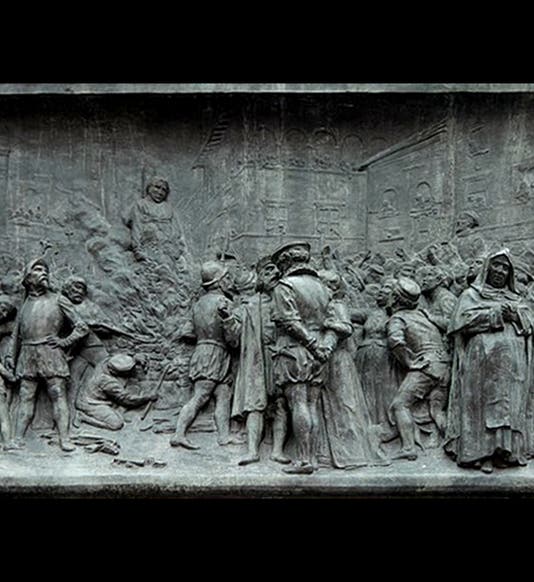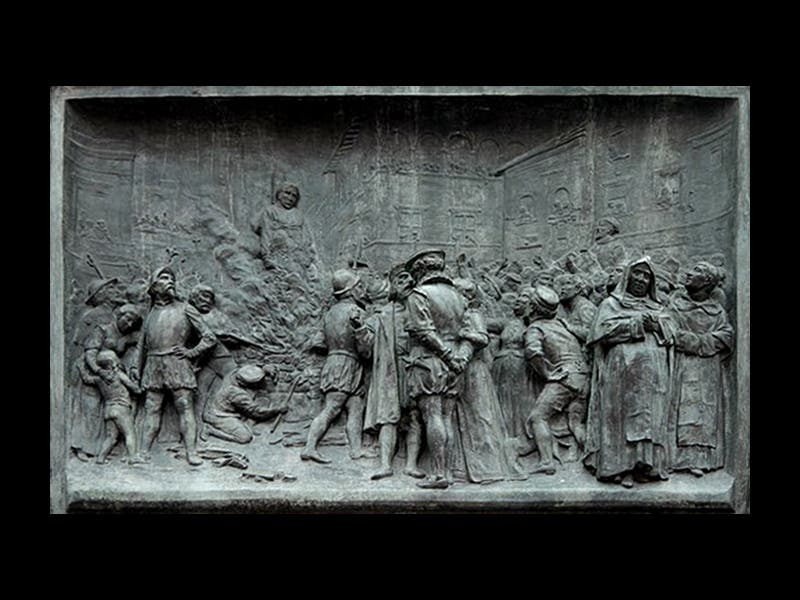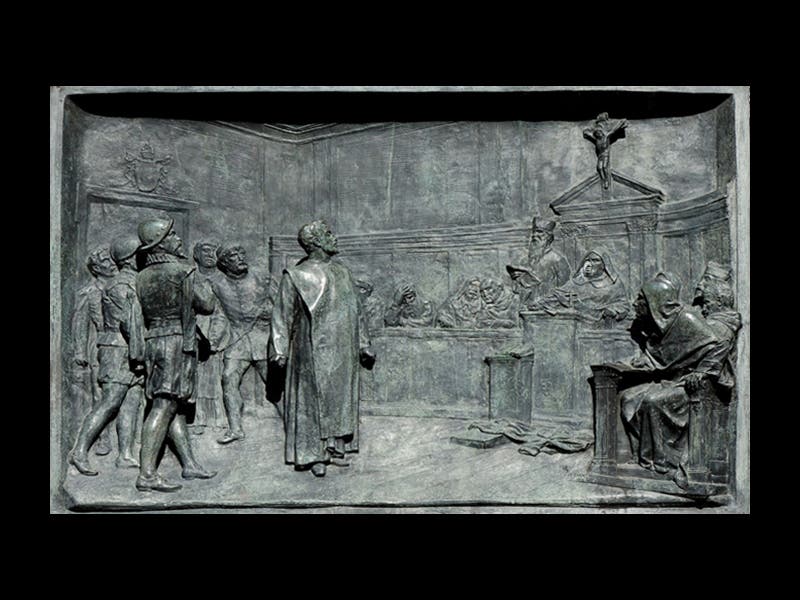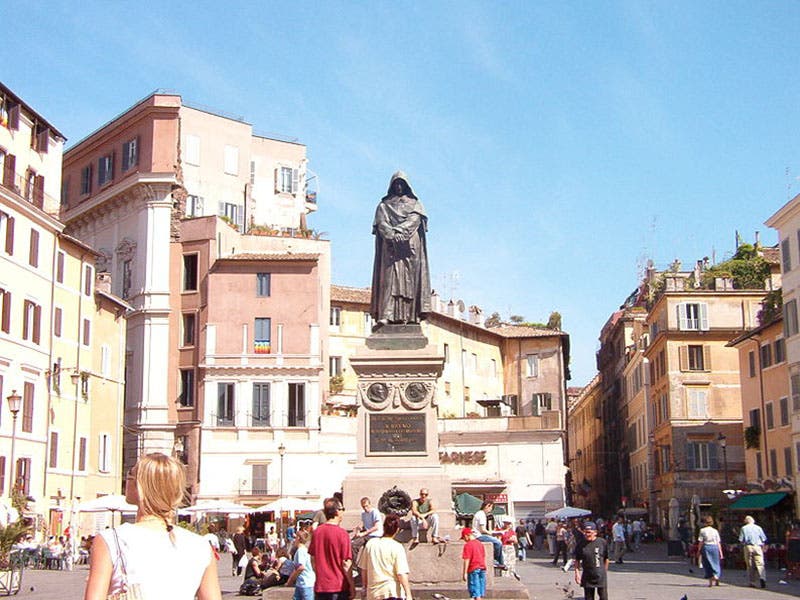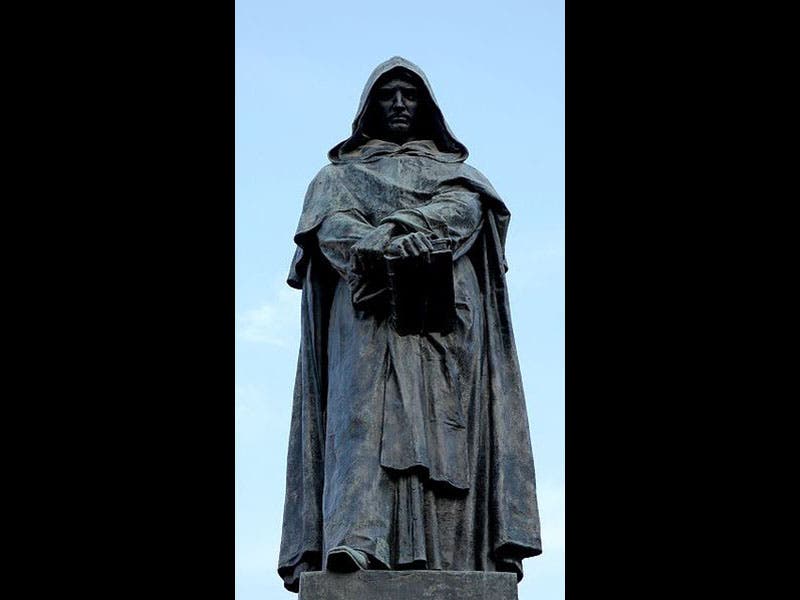Scientist of the Day - Giordano Bruno
Giordano Bruno, an Italian philosopher, was burned at the stake in Rome on Feb. 17, 1600. Bruno was born in Nola, near Naples, and he entered a Dominican monastery when young. Very quickly he became known for his radical ideas, and when charges of heresy were drawn up against him, he fled Italy and spent much of his life in France, England, and Germany, teaching the art of memory and denouncing traditional Aristotelian philosophy. He very unwisely returned to Italy in 1591, was arrested in Venice, and then taken to Rome, where he was imprisoned for heresy and questioned for seven years. Although Bruno was a Copernican, believing that the earth was not the center of the universe, that was not the source of his problems; rather, he was accused of teaching that Christ was a magician rather than a miracle-worker, of denying the virgin birth, and of believing in the plurality of worlds--that there were other beings on other planets orbiting other stars. He refused to recant his views under torture and was sentenced to death by fire. The fact that he was a Copernican gave Copernicanism a bad name in the Church, really for the first time, and 16 years later, Copernicanism would be declared heretical by the Church.
As a heretic, Bruno was persona non grata in Rome for centuries; his books had been banned and burned, very few people had heard of him, and there were no public memorials at all to remember him by. Then in 1884, the Freemasons of Italy, furious at the Pope for denouncing Freemasonry in a papal bull, commissioned a bronze statue of Bruno from Ettore Ferrari, a noted sculptor (and a Freemason). It was erected and unveiled in 1889 in the Campo dei Fiore, a market square in Rome, at the very spot where Bruno had been executed in 1600. The statue is still there. It faces north, so that Bruno's face is never illuminated by the sun, and from a distance, he looks very much like Darth Vader (third image). If you move closer, you can see some of Bruno’s face (fourth image). But of course it isn’t so important to see his face, since neither we nor Ettore Ferrari have or had any idea what Bruno actually looked like.
Below the statue, there are several bronze reliefs by Ferrari that depict the life of Bruno, including his appearance before the Inquisition (second image), and his immolation on this date in the year 1600 (first image).
Bruno published quite a few pamphlets on a variety of subjects, but because he wrote on the fly and published on the sly, all of his works are very scarce today. We are fortunate to have two of his books, including De triplici minimo et mensura (1591), in our History of Science Collection.
Dr. William B. Ashworth, Jr., Consultant for the History of Science, Linda Hall Library and Associate Professor, Department of History, University of Missouri-Kansas City. Comments or corrections are welcome; please direct to ashworthw@umkc.edu.

